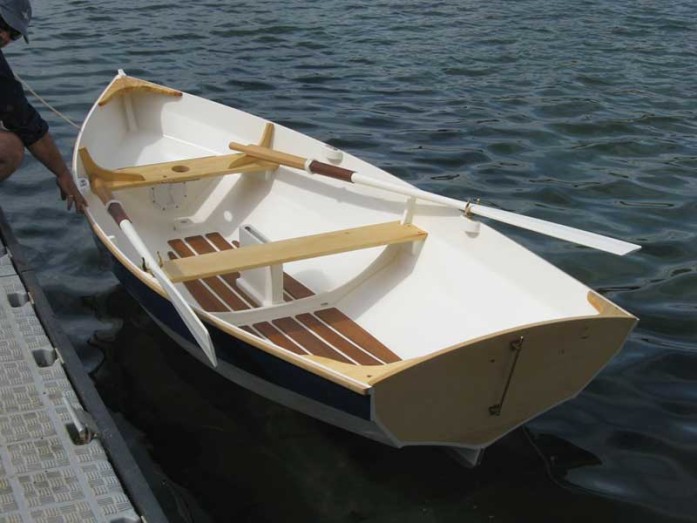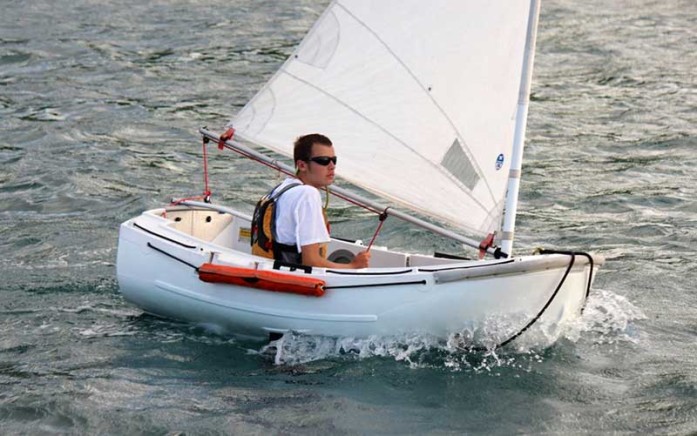The word dinghy founds its origins in Hindi, Urdu, and Bengali languages. A dinghy is a small boat usually used as an auxiliary for a larger one, being towed or carried by them. They are usually rowboats, or they have attached a small motor in the back. There is a difference between these type of dinghies, and some other types, with sails, specially designed for competition.
A dinghy should have a strong ring on the bow, and, conventionally, it will have an oar on each side. Many modern dinghies are made of synthetic materials. These require minimal care and do not rot but can suffer from fiber glass pox which is caused by the ingress of saltwater through the gel coat. Inflatable dinghies can be made of fabrics coated with Hypalon, neoprene or PVC. Rigid dinghies can be made of glass-fiber reinforced plastic (GRP) but injection-moulded one-piece hulls are also available. Other materials for modern rigid dinghies include aluminum, marine plywood which tends to be much lighter than most types and, with the advent of sturdy, UV resistant polyurethane varnishes, wood.

Dinghy
[source]
Some wooden dinghies (especially of classic or historical form) are built using the carvel or clinker methods. Favored woods, in order of rot-resistance, are White oak, Black locust, species of cedar and pine, true as well as African and Asian mahoganies, fir and spruce. Rot resistance depends on paint as well as protection from rainwater. Plastic hardware is sometimes used, but bronze and stainless steel are good corrosion-resistant materials for hardware, although stainless steel can be subject to crevice corrosion after many years especially in a boat using an outboard or other motor and must be inspected. Stainless steel should never be used for fittings permanently in the water. Owners should check that the correct grade of stainless steel is used in a fitting .Working boats may use lower-cost galvanized steel, but the hardware may need to be re-galvanized or replaced eventually.
Usually, dinghies are being propelled by a pair of oars. The inflatable ones which are a little bit harder to row have a small motor, which sometimes can make the dinghy to reach speeds up to 22 knots.

Sailing Dinghy
[source]
Less used as a yacht accessory, the dinghies armed with a sailing rig makes the object of racing and other competitions, even if their form is less proper for sailing. The scope is to cover a short distance from the main vessel to the shore, or, if used for fishing, to offer you the possibility to throw your hooks or nets further from shore.
If you like what you read, please subscribe to this blog by completing the form. If you want to help more, start by following us on Twitter, and like our page on Facebook. You don’t know what good things may happen. To lighten your day, check our pins on Pinterest, we can be friends there too. Oh, and if you need a really good looking blog attached to your site, or just for fun, to express your feelings more competitively, read this Own Your Website offer! Thank you very much.
